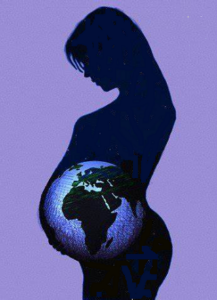
Arquivo para December, 2020
What to expect in 2021
Judging by the year that ends, it is better not to make predictions, but be prepared for positive or negative surprises, we talk about resilience in 2020 and this means being prepared for adverse situations, stress and deprivation, of course always hoping for improvements.
but be prepared for positive or negative surprises, we talk about resilience in 2020 and this means being prepared for adverse situations, stress and deprivation, of course always hoping for improvements.
I watched the movie The Midnight Sun and some thoughts about a possible dark future came to mind, it is based on the Lily Brook-Dalton and just like the film (which is on Netflix) they are very successful, although the critic does not praise, at least the performance of actor George Clooney is commendable, and there is a perfect combination of optimism and fiction.
I watched the movie The Midnight Sun and some thoughts about a possible dark future came to mind, but now with a touch of humanism and even optimism, it is based on the book Good Morning, Midnight (2016), written by Lily Brooks-Dalton.
The mixture of science fiction with feelings seems inadequate, this is one of the main criticisms, I think that in the case of a deep crisis on our planet this mixture is adequate, the second main criticism is the type of plot, undoubtedly very different, the Sometimes we lose the sequence and we need to think a little, at this point, success on Netflix is curious, maybe people have learned to like this, reflection is good and leads us to questions.
The film led me to think about 2021 because it is a resilient attitude, on my part, to think if the worst happens, what can I do positive to help myself and help people.
Let the vaccine come, let us start a process of resuming life, but we hope that the new normality will be more human, with a more empathic look to those around us, and that we will have more solidarity among people, then the pandemic will have taught us something.
However, it is necessary to change attitudes, behaviors and mentalities, affirmative gestures by well-intentioned and altruistic people are not enough, we need to take more seriously what we can help us as humanity, as a society and as a person.
That this year come the vaccine, with a vaccine and a lot of solidarity and if necessary with a lot of resilience.
2020: a year for which there was no preparation
The pandemic took us by surprise, so much so that there are still people who do not believe that it is happening, in round numbers there are almost 82 million cases of covid-19, 46 million recovered, and it is reaching almost 2 million deaths in the All the world.
people who do not believe that it is happening, in round numbers there are almost 82 million cases of covid-19, 46 million recovered, and it is reaching almost 2 million deaths in the All the world.
The Olympics in Japan has been postponed, if it occurs it will be in a much smaller scale than the previous ones, planes stopped after flight records in 2019, which reached 230 thousand flights in a single day, entire cities empty due to the lockdown: Paris , London and other major European cities were unrecognizable without the daily hype and economies around the world were weakened.
Many analysts anticipated a post-pandemic that is still uncertain and just as the pandemic was unpredictable, from apocalyptic to utopian, what will be the new normal may still be indefinable.
In politics, polarization continued, new crises of anthropologically serious social problems such as racism, machismo and xenophobia (see Sloterdijk’s analysis in the previous post) came to the fore, since they are problems that have always existed in human history.
Also a word that defines the year for those who are aware of this set of issues is resilience, but the proper use of this word implies an even greater knowledge of its meaning: the individual’s ability to deal with problems, adapt to changes, overcome obstacles or resist the pressure of adverse situations or some dramatic situation.
While some countries have managed to react with resilience, due to culture and political difficulties, most countries, at least in the West, oscillated between situations of restrictions with the closure of public places: shopping malls, bars, restaurants and entertainment venues, and a relaxation that almost always led to an increase in covid-19.
An absolutely abnormal year that a deeper analysis can only be made from some historical distance and what can happen after the vaccine is unpredictable
Sloterdijk’s new book
Peter Sloterdijk’s book “Las epidemias policas” is still in progress, but there are already quotes and comments about it, which read that there is an “almost perfect synchronicity of the microbial pandemic with the informative one, and believes that the current crisis could lead to“ to a collective conscience within individualism ”, where a new optimism appears.
there are already quotes and comments about it, which read that there is an “almost perfect synchronicity of the microbial pandemic with the informative one, and believes that the current crisis could lead to“ to a collective conscience within individualism ”, where a new optimism appears.
One of the most widely read comments on the proto-book is what was published on August 26, 2020 in by El Ciudadano, and which was commented on by the Brazilian magazine IHU (Instituto Humanitas Unisinos, do Brazil).
It states that society is not yet “in a position to look beyond the pandemic” and predicts that little will change as “many look forward to returning to the continual frivolity of the consumerist way of life” and only with time and reflection does this “Will lead to a transformation of the collective consciousness within individualism.
The name is because it sees the media as “carriers of infections” and that the current democracy is superficial to house the exchange of argument and dialogue, so we are always “between epidemics, strategies and vaccines” in a broader sense, where the information is just a network of “emotion, poisoning and destruction of public judgment”.
The analysis is accurate because dualism and polarization do not have only one side, but they have both equally and it seems that we are stuck in this logic where arguments matter little.
For example, he points out about hate speech, the fact that “people often tend to see each other as a source of danger is not a consequence of the current coronavirus pandemic, nor is it an invention of nineteenth-century pseudo-biological racism, Claude -Lévy Strauss pointed out, a long time ago that a dose of xenophobia is part of the ancestral heritage of the species homo sapiens ”.
Despite the systems that explained everything having failed, he detects that “now, almost nothing is as contagious as the enthusiasm for universalist ideas. When universalism fails, criticism arises. When criticism fails, mass resentment arises furiously ”and concludes that this is what leads to“ epidemics of anger ”, in short our difficulty in resignation and resilience.
He makes his historical synthesis analyzing that “In Europe, the Enlightenment started with the statement that common sense is the best distributed thing in the world. There are many reasons to doubt the veracity of this thesis”, we now know that security and immunities are poorly distributed.
Which vaccine is mandatory?
So said the STF (Federal Judges in Brazil), however the final phase of testing the Chinese vaccine Coronavac in Brazil will only have the report released on January 7, informed the Government of the State of São Paulo, the Pfizer vaccine used in the United Kingdom since December 2 and thousands of Britons received the first dose of the vaccine, the company released detailed data from the testing phase that have been validated (checked by the scientific community), in Brazil CoronaVac has not yet.
phase of testing the Chinese vaccine Coronavac in Brazil will only have the report released on January 7, informed the Government of the State of São Paulo, the Pfizer vaccine used in the United Kingdom since December 2 and thousands of Britons received the first dose of the vaccine, the company released detailed data from the testing phase that have been validated (checked by the scientific community), in Brazil CoronaVac has not yet.
The Pfizer vaccine is already authorized in the United States and is expected to be in Continental Europe, Argentina adopted the Russian vaccine and will start vaccination on Tuesday (12/29).
Vaccination campaigns against covid-19 started this Sunday in the European Union (16 countries have already authorized a total of 27), and in Russia Sputnik has been applied since December 5, but the testing phase has been run over.
If it is true that there is ideologization of the Chinese vaccine, it has two sides, because its approval is not following the traditional paths, if Anvisa is unauthorized, this is a matter for the STF.
Since November 9, four laboratories have announced that their vaccines are highly effective: Pfizer/BioNTech, Moderna, AstraZeneca / Oxford and the Russian state institute Gamaleya, AstraZeneca announced this weekend that it has a medicine to cure already infected patients, of course this is yet to enter the testing phase.
AstraZeneca is the cheapest (2.50 euros / $ 3 a dose), Moderna and Pfizer / BioNTech have a logistical problem as they must be transported at low temperatures of -20ºC and -70ºC.
Experts claim that side effects exist, several newsletters give this information, highlight in Brazil to Isto é Magazine, and abroad the AARP Foundation that helps American retirees.
Only Brazil (officially the State of São Paulo and the city of Rio de Janeiro), Indonesia and Turkey are buying the Coronavac vaccine, we all want the vaccine, without scientific criteria the political polarization again does not clarify anything, the vaccine it must be tested and approved, the data must be validated by the scientific community and by regulatory agencies.
New intimacy and new world
In intimacy, in our “bubbles” that generate our culture, we defend and promote our ideas, our values and what we want for a better world.
defend and promote our ideas, our values and what we want for a better world.
Christmas somehow still makes men sympathize and think generously about the future world beyond their bubble, their selfishness, and if this goes on for the year a new world may be born, even in a pandemic crisis that is already a broader crisis.
The reflections of Sloterdijk and other thinkers is how interiority has become an isolated world, like a “bubble”, and in it reflects our initial stage of our life in the maternal womb and extends through life, the analysis made by Sloterdijk ( also Bachelard does it in another way, see the post) it is like the biblical passage of the prophet Jonas in front of the whale, which is illustrative of this way of being, of seeking an “intimacy” of comfort.
By remaining in the whale’s womb, symbolically it is what we seek as a region of comfort, or security, in a hostile world where we must seek co-immunity, a defense where everyone can participate and enjoy a well-being.
The birth of Jesus for Christians means the announcement of this womb, of this “kingdom”, in these days we celebrate the coming through a child-God of this new time in a new world.
The biblical passage that reports the birth of Jesus says that Joseph and Mary went to Bethlehem, due to the census made by the Roman Empire: “to register with Mary, his wife, who was pregnant. While they were in Bethlehem, the days of childbirth were completed, and Mary gave birth to her firstborn son. She bandaged him and put him in the manger, as there was no place for them in the inn ”(Lk 2,5-7).
Spherelogy, intimacy and exteriority
It is not by chance that Sloterdijk praises Gaston Bachelard at the beginning of Spheres I, his approach has a deep dialogue with Bachelard’s poetics of space, as both the intimacy theme is linked to articulation and two conceptions: “exteriority” and “space”.
at the beginning of Spheres I, his approach has a deep dialogue with Bachelard’s poetics of space, as both the intimacy theme is linked to articulation and two conceptions: “exteriority” and “space”.
The first point is to understand that the phenomenological approach has a direct influence on Heidegger’s Being and Time, at the same time that they outline criticisms, even though Heidegger did not dwell deeply on the theme, it is between the lines of his work.
In the opening chapter, Sloterdijk refers to the human with the so-called “erratic blocks”, in which the astonishment at the “I” in the world would be like these blocks that “are there”. In view of this, the possibility of consciousness being made with the world opens up.
The recognition of this condition of being played randomly in the world does not happen smoothly, but through “the unexpected, the rebellious and the disturbing that the ecstatic personal finding can be” (SLOTERDIJK, 2008, p. 16), erratic blocks were geological formations displaced in the last ice age.
The first volume is dedicated to the issue of intimacy and Sloterdijk part of the mother-baby relationship, we are joined to another body from the moment of conception, by a “rejected organ” that is the placenta, whereas in other times it was somehow ritualized, now the “original companion” is discarded as garbage.
He will point out from this (as he did with the prophet Jonas) to look for ways not explored by current philosophy, “the relationship, the connection, the fluctuation in an within-something and in a with-something, being contained in between” (SLOTERDIJK, 2016) and for this reason his spherology is his essential work.
I highlight Bachelard’s work because for him there is a perspective that I consider broader, that of describing the intimate experience in addition to the experience with the other, with the totality of the world.
This is also the case in Bachelard, in opposition to Heidegger, where he states: “From our point of view, from the point of view of a phenomenologist who lives from his origins, the conscious metaphysics that is located at the moment when being is ‘thrown into the world’ it is a second position metaphysics.” (BACHELARD, 1993, p. 27)
While Sloterdijk is the womb the primary “space”, the place of well-being, for Bachelard it is the home, the paradigmatic place of well-being and protection.
If we understand interiority as the place where we combine these two sensations: the womb that is the primordial house, and the house that is the space in the world where we co-inhabit with other beings, not just humans, of course, we can combine interiority and intimacy, and we have a new horizon not only metaphysical, but human, divine and between these two conjugations: the original womb, the common home and the final destination that interiority provides.
BACHELARD, G. (1994) A poética do espaço. Trad. Antônio de Pádua Danesi. Bransil. São Paulo: Martins Fontes.
SLOTERDIJK, P. (2008) O Estranhamento do Mundo. Trad Ana Nolasco. Lisboa: Relógio d’Água, 2008
SLOTERDIJK, P. (2016) Esferas I: bolhas. São Paulo: Estação Liberdade.
Spherology and Jonah
The resumption of the prophet Jonas within Peter Sloterdijk’s  spherology, owes to the concept of intimacy that explores it as well as we conceived it, a personal, safe and stronghold composed of a single particular material, this specific intimacy must not exist, he will use two expressions “dyad” and“ divalence ”, then you will combine them with a two-tone musical expression, where there is no dominant note.
spherology, owes to the concept of intimacy that explores it as well as we conceived it, a personal, safe and stronghold composed of a single particular material, this specific intimacy must not exist, he will use two expressions “dyad” and“ divalence ”, then you will combine them with a two-tone musical expression, where there is no dominant note.
It seems that the Jewish sense of Jonas, the one who rejected his mission and went to the whale’s belly would have little to do with this, only with the intimacy, with the stronghold where he fell refusing his “mission”, but thought like a dyad, the a relationship of two or more where there is no center, and divalence, unlike ambivalence where they are equal, there are opposing forces in a dyadic relationship.
Not only in human phenomena, but every type of relationship has dyadic forces, intrapersonal relationships would also be this tangle of consciousness between the internal, the external, the personal, the collective, or if we prefer the idealistic, the subjective and the inter-subjective relationships.
Let us now return to the topic to think about Jonah, the prophet and the whale.
Being a prophet means revealing the will of God to his people, so the dyad between the divine and the human is said between the man / saint, as a man would not be able to handle his task, after all it was necessary to have holiness and inhabit the divine, but neither only a saint would be enough, because it is necessary to be a man to know the perdition and occupy the land, in the case of Jonah preaching conversion to the people of Nineveh, the Assyrians were terrible.
Here the whale comes in, recognizing the power of his God in it, prays, repents and is “vomited” on solid ground, leaving near the city that he should prophesy before his disobedience, but when he is vomited he returns to fulfill God’s will and his role as a prophet.
Here come the double notes, the triumphant ending, it is neither the structure of man nor the prophet that wins, it is a place of man / prophet, the relational structure is already there, right in front of us if we want to dissect it , will fulfill the mission, even if you do not want it.
For Christians it is the importance of the mission, but for Sloterdijk it is even more transcendent (even if it doesn’t have the slightest religious tic), it is to answer their essential ballpoint question: where we are when we are in the world, Jonah is fundamental for this, in the womb of the whale afraid of our fate, so we need to be vomited to understand our tasks.
The philosopher ironically says: “the only bodies that are located without duality in the world are those of the dead” (Spheres I), and asks the reader and me: Where are you now? The answer to this is not a simple GPS, but your conscience is the only tool you have available to understand your surroundings and articulate a more sensible answer that says something about being there.
The Christmas of the pandemic
It will be a quieter Christmas, despite groups that insist on holding gatherings and parties with many people, it will be more like the child who was born in a humble stable in the city of Belém, where they went due to a census, it is not a coincidence (the city illuminations in this year).
The Child was contacte among men, it was in the divine and human logic because the census was done by order of the Roman empire, so He was (for those who believe he is) among us, what the prophecies of the Old Testament called Emmanuel (God with us).
The pandemic isolated us as a family, and the tendency for those who understand that prevention is necessary will be to gather in small groups, perhaps with less noise, most New Year’s parties are already canceled, fires and celebrations will be sober.
The waiting for the vaccine, most are still in the testing phase, it is good to say, and there are still controversies about side effects, they are important to be known, the package insert is necessary like any other medicine, where there are contraindications.
There is no expectation that it will not cause any anxiety, however when it comes to health it is necessary not to skip any stage, the vaccines are not approved because they have not completed the testing phase, even in England where the Pfizer vaccine was authorized, the stage will not be completed vaccination until Christmas as the government intended.
There is news from the WHO itself about mutations in the virus, it is necessary to check if these mutations do not affect gravity, British scientists called the variation found in the south of England “VUI-202012/01”, which includes a genetic mutation in the protein “spike”, as reported in several online news citing the Reuters agency.
The wait for Christmas has also become different because we haven’t seen many friends and relatives for years, and in this period, the people return to loved ones as much as possible, and at least an online contact will be possible, they will become more meaningful.
Noogenesis: matris in gremio
In tour 10 of Spheres I, Peter Sloterdijk makes a connection  between the conception of Mary (the name Concept comes from conception) and tragedy, and a text that is certainly known to the philosopher is Hörderlin’s interpretation of the Greek tragedy Oedipus King of Sophocles, where he uses the term aorgic for the search for Epic to know who he is, the more he searches, the less conscious consciousness becomes towards tragedy.
between the conception of Mary (the name Concept comes from conception) and tragedy, and a text that is certainly known to the philosopher is Hörderlin’s interpretation of the Greek tragedy Oedipus King of Sophocles, where he uses the term aorgic for the search for Epic to know who he is, the more he searches, the less conscious consciousness becomes towards tragedy.
The tragedy is that father Laio, had heard from the oracle of Delphi, that his son would kill him and marry his mother Jocasta, the king hands him over to a poor shepherd to kill him, but the shepherd raises him and then he goes stop at the hands of Polybius, king of Corinth who raised him as a son, but the tragedy is fulfilled and then Oedipus kills King Laius, who was his real father and marries Jocasta when he becomes aware of the blind truth, the tragedy has more details, here it is just to understand the aorgic.
Sloterdijk inverts this story to talk about Christian mariology, in his tour 10 Matris in gremio (mother’s lap or lap), where after analyzing the text De humanitae conditionis in miseria by Lotário de Segni (1160-1216) that would become Pope Inocencio III, who says that the liquid that would feed the child is the same as the menstruation that would be interrupted with the pregnancy.
Sloterdijk, states that “there is no doubt that Jesus, even in gremio, must have been provided with a different dietary plan” (Sloterdijk, 2016, p. 557), and will use Question 31 from the third book of the Summa Theological of Thomas de Aquino, however the important thing is his “conception”.
Tomás de Aquino’s quote is important because it explains the noogenesis:
“… Because, by the action of the Holy Spirit, this blood is collected from the Virgin’s lap and formed into a fetus. That is why it is said that the body of Christ was formed by the most chaste and pure blood of the virgin ”(Aquino, Suma Theológica III, 31, 5, 3, SP: Loyola, 2001-2002).
In the biblical text, Mary, although promised to Joseph, he has not yet married her, says the biblical text: “Mary asked the angel,” How will this happen if I don’t know any man? ” (Lk 1,34), and receives the answer that will be by the action of the spirit, under the shadow of the power of the Most High.
And so the idea was born that Mary was taken to heaven, but it is also the birth 11 centuries before being accepted, the dogma of her Immaculate Conception (which by popular use became Conceição), thus “it is the very matrix of God who miraculously offered the sculptor the material of his sculpture, and to God the material to become a man… ”(Damasceno apud Sloterdijk, 2016, p. 558), which thus pre-announces Mary’s aortic action with Jesus and God- Father, as a pericoresis in extremis (in the photo, also used by Sloterdijk, Virgin with Overture, late 14th century, Cluny Museum in Paris), also cited by Sloterdijk.
Sloterdijk, P. (2016) Esferas I, trad. José Oscar de Almeida Marques, BR-São Paulo: Estação Memória editors.
Two hearts and a new relationship
Peter Sloterdijk’s wit penetrates the post-reform Catholic  mystique, “particularly under the mystical influence of the Sacred Heart of Jesus, Marguerite Marie Alacoque (1647-1690). a vast cult movement, which also ended up imposing liturgical concessions and doctrinal formulations ”(p. 115).
mystique, “particularly under the mystical influence of the Sacred Heart of Jesus, Marguerite Marie Alacoque (1647-1690). a vast cult movement, which also ended up imposing liturgical concessions and doctrinal formulations ”(p. 115).
It will highlight the work of the oratorian priest and popular missionary João Eudes (1601-1980) “born in Normandy, who entered the Catholic annals as the founder of a cult of great liturgical strength, the cult of two hearts” (p. 116), the Immaculate Heart of Mary and the Sacred Heart of Jesus.
Contrary to many interpretations, this atheist philosopher, in addition to maintaining the topicality of the topic, since the foundation of this type of mystique, is “a struggle against outside, non-Catholic life, separated from something that is not within God” ( page 116).
According to Eudes, the life of the saints was sustained in a “continuous suspension of the amniotic bag of the Absolute” (the quote is from Sloterdijk), but the important thing is to highlight the typical engagement of Mary, which consists according to the philosopher “in the fact that she created a heaven bipolar heart, in which the Son’s heart could merge into a mystical union with the mother’s heart ”(p. 116), something with the theme of the previous post, but in much higher quality.
After the atheistic manifestation of the “bipolar”, it can be said that these hearts in a deep relationship is not an ancient spirituality, something of ladies who wear a red ribbon on festive days of the Apostolate of the Sacred Heart of Jesus, but what the priest Eudes elaborated in the post-reform period and what the philosopher calls “the canopy of the double heart of the Son and the Mother … an intercordial family, metaphysically enlarged” (idem, p. 116).
This relationship of these hearts, interpreted in the heart of nature, burning in collaboration that touches the radiant heart of love from the upper world in the work of Jacob Böhme (Theosophical Works, 1682), in the photo illustrated on page 117 of the book, the broader relationship appears in the final pages on tour 10 “Matris no grêmio” (on her mother’s lap), detailed as a “marylogical whim”.
The idea of the child in Mary’s womb takes on a divine figure (of the Father God), what the Orthodox and Catholics call Teotokos (mother of God) (in the photo the icon of G. Gashev) that for evangelicals is heresy, but what do they mean for this moment of pandemic crisis, and of a previous civilization crisis?
SLOTERDIJK, P. (2016) Esferas I, trad. José Oscar de Almeida Marques, Brazil/São Paulo: Estação Memória.

